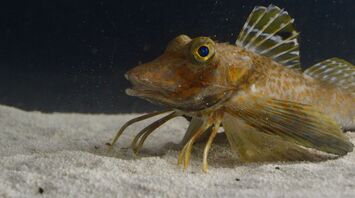Sea Robins Use "Legs" to Taste and Find Prey

A unique type of fish, the sea robin, employs leg-like appendages not only for movement but also for "tasting" the ocean floor. These limbs, derived from modified fins, allow sea robins to navigate and find hidden prey effectively.
Research Findings
In formal studies, scientists aimed to explore the sensory capabilities of these leg structures. They discovered that electric impulses in the fish's limbs activate when exposed to various food-related chemicals, such as amino acids. This capability supports the ability of the sea robins to uncover buried objects, which may range from mussels to capsules containing musculoskeletal extracts.
The researchers conducted experiments by placing individual sea robins into controlled environments with water and sand. Beneath the sand were either mussels, capsules with mussel extract, or just seawater. The sea robin species Prionotus carolinus consistently identified prey capsules but ignored seawater versions. They performed successfully even as prey depth increased, suggesting adaptation to chemical cues from their food source.
Unique Limb Structures
Examination of the fish' limbs exhibited small bumps akin to human taste buds. These specialized areas contain taste receptors, potentially enhancing both touch and chemical sensitivity. Co-author Dr. Corey Allard from Harvard University characterized their evolution as a novel application of sensory structures primarily associated with taste.
Comparison with Other Species
Contrastingly, another species, Prionotus evolans, showed neither digging behavior nor responsive nerve activity to food-related chemicals. Its limbs lacked the unique bumps present in Prionotus carolinus. Researchers proposed that these legs originally developed for movement, later adapting to fulfill sensory roles in the search for food.
Scientific Implications
The findings present an exciting perspective on evolutionary biology. Dr. Allard highlighted that studying these non-traditional fish could provide valuable insights into how new body structures and functions arise during evolution. He emphasized their potential natural history, saying, "These crazy little weird fish have much to tell us that we probably couldn’t learn from conventional organisms like mice."
Earlier, SSP told about why dogs stare intently at us.



















